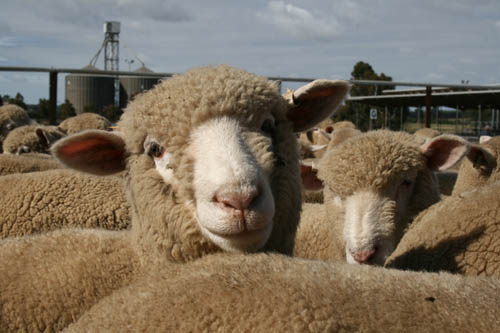
Sheep and shearing can create many hazards for farm workers as sheep can be unpredictable and result in physical injury.
Safe work practices and good training can help to avoid many mishaps. A safe working environment can minimise the chances of both injury and illness. Well-designed yards and shearing sheds can help to prevent and reduce a range of physical, chemical and biological hazards.
When you are working with sheep – from mustering and drafting to shearing and returning sheep to paddocks – develop and communicate your plans to all workers involved. Well-designed and well-maintained yards make it a lot safer, not to mention easier, to handle sheep. Ensure your shearing shed is sufficiently lit and ventilated, agricultural and veterinary chemicals are used and stored appropriately, and machinery is safe and well maintained.
Hazards associated with working with sheep
- Mustering with dogs and motorbikes/quad bikes.
- Charging and crushing.
- Dust.
- Zoonosis.
- Trips and falls.
Hazards associated with shearing, crutching and treating sheep
- Manual handling causing musculoskeletal injuries (i.e. back strain and knee injuries).
- Slips, trips and falls.
- Crushing and foot injuries.
- Noise exposure.
- Chemical exposure and self-vaccination.
Recommendations when working with sheep
- Design yards, sheds and races carefully to ensure smooth stock flow to reduce the risk of crushing and collisions with animals.
- Have a good working knowledge of animal behaviour and a positive attitude towards stock.
- Prepare yards (water down) to minimise dust and wear respiratory protection when needed.
- Always wear a helmet when riding a motorbike/quad bike even if moving slowly.
- Use non-slip surfaces to avoid falls and slips in yards.
- Make sure safety cut-off switches are installed and working on shearing plant and wool presses.
- Have guards fitted on shearing equipment, wool presses and grinders.
- Consider using lift or slide swing gates.
- Minimise the amount of lifting needed, but if you must lift a sheep, use your legs, not your back.
- Ensure correct personal protective equipment (PPE) is used and worn including appropriate footwear.
- Maintain loading ramp and race in good working order.
- If electricity is available, have electric motors fitted to the wool press to reduce air and noise pollution.
- Avoid back injuries by maintaining good posture and using your legs instead of your back.
- Ensure workers are sufficiently trained in the task being undertaken.
- Fit emergency control/buttons, ensure all are in working order and are prominently signposted.
- When shearing, keep animals close to your body and when you need to lift them, use your thigh muscles.
- Consider using sedatives when shearing prime lambs or crossbred sires – consult your vet.
- Know what to do if a needlestick injury occurs.
Find out more about this topic on Better Health Channel.
Fast facts:
- Handling sheep can cause strains, sprains and other injuries.
- Stay fit to maintain muscle strength and reduce your risk of injury.
- When you work with rams in a race, always watch the other rams behind you.
- Make sure all sheep handling areas are safe and train all workers in safe handling practices.
References used for this topic
More information:
Australian Wool Innovation
Shearing Shed Safety
SafeWork SA
Farmers’ Guidebook to work health and safety [PDF]
NSW Department of Primary Industries
Best Practice Sheep Handling video
National Centre for Farmer Health
Farmer needlestick injuries
Research & reviews:
Primary Industries Health and Safety Partnership
Woolshed Safety: A practical guide (2016)
|
|